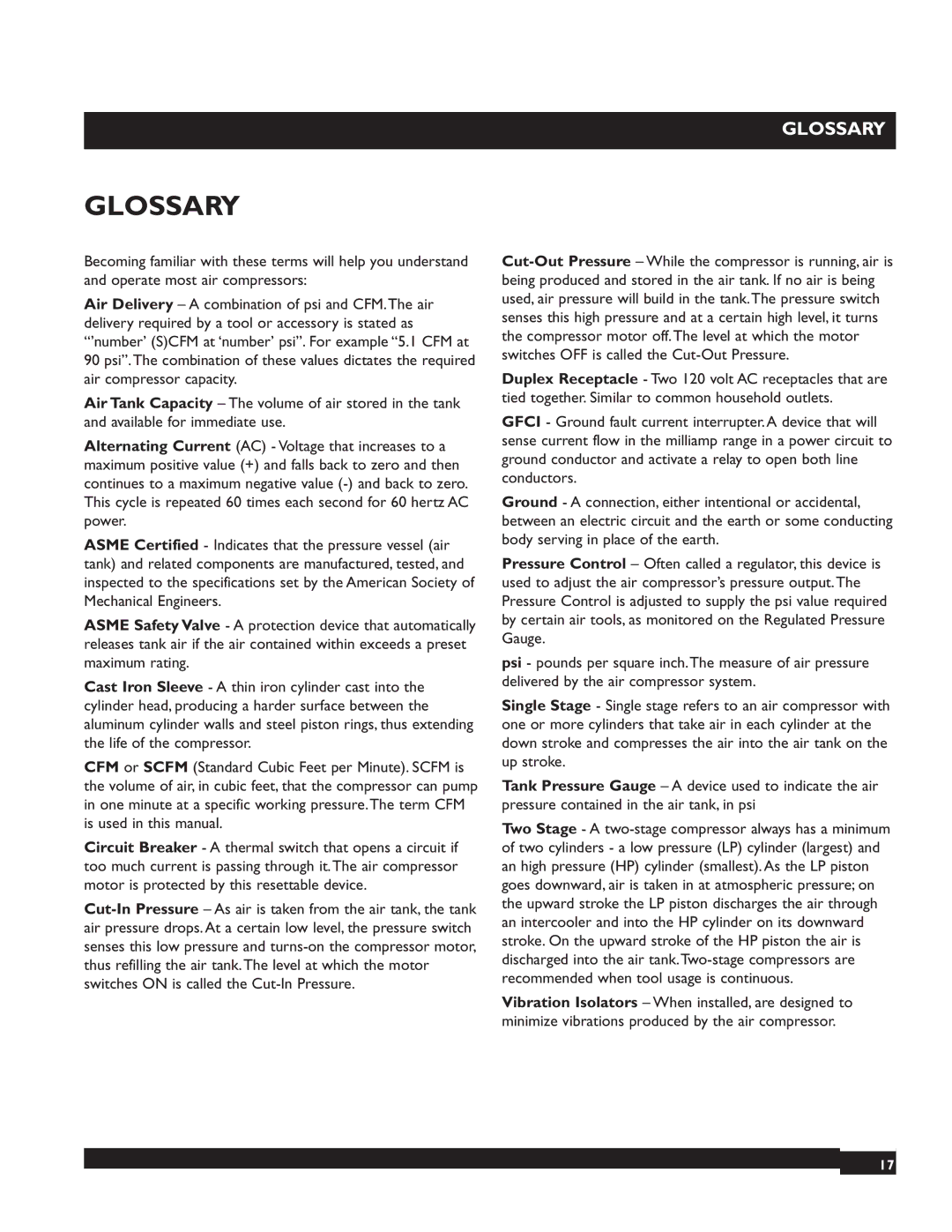
GLOSSARY
GLOSSARY
Becoming familiar with these terms will help you understand and operate most air compressors:
Air Delivery – A combination of psi and CFM.The air delivery required by a tool or accessory is stated as “’number’ (S)CFM at ‘number’ psi”. For example “5.1 CFM at 90 psi”.The combination of these values dictates the required air compressor capacity.
Air Tank Capacity – The volume of air stored in the tank and available for immediate use.
Alternating Current (AC) - Voltage that increases to a maximum positive value (+) and falls back to zero and then continues to a maximum negative value
ASME Certified - Indicates that the pressure vessel (air tank) and related components are manufactured, tested, and inspected to the specifications set by the American Society of Mechanical Engineers.
ASME Safety Valve - A protection device that automatically releases tank air if the air contained within exceeds a preset maximum rating.
Cast Iron Sleeve - A thin iron cylinder cast into the cylinder head, producing a harder surface between the aluminum cylinder walls and steel piston rings, thus extending the life of the compressor.
CFM or SCFM (Standard Cubic Feet per Minute). SCFM is the volume of air, in cubic feet, that the compressor can pump in one minute at a specific working pressure.The term CFM is used in this manual.
Circuit Breaker - A thermal switch that opens a circuit if too much current is passing through it.The air compressor motor is protected by this resettable device.
Duplex Receptacle - Two 120 volt AC receptacles that are tied together. Similar to common household outlets.
GFCI - Ground fault current interrupter. A device that will sense current flow in the milliamp range in a power circuit to ground conductor and activate a relay to open both line conductors.
Ground - A connection, either intentional or accidental, between an electric circuit and the earth or some conducting body serving in place of the earth.
Pressure Control – Often called a regulator, this device is used to adjust the air compressor’s pressure output.The Pressure Control is adjusted to supply the psi value required by certain air tools, as monitored on the Regulated Pressure Gauge.
psi - pounds per square inch.The measure of air pressure delivered by the air compressor system.
Single Stage - Single stage refers to an air compressor with one or more cylinders that take air in each cylinder at the down stroke and compresses the air into the air tank on the up stroke.
Tank Pressure Gauge – A device used to indicate the air pressure contained in the air tank, in psi
Two Stage - A
Vibration Isolators – When installed, are designed to minimize vibrations produced by the air compressor.
17
